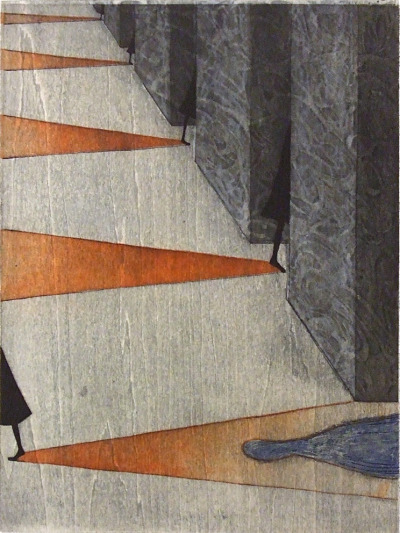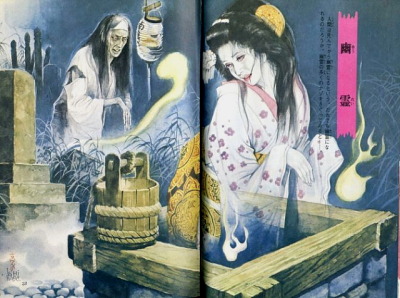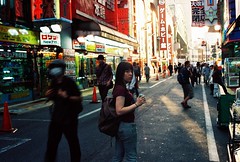 Gallery Koyanagi
Gallery Koyanagi was a little tricky for me to find at first, but so very rewarding. The current exhibit (that ended the day after I saw it) featured the artist Tabaimo, in her show “Te Te Te”. The gallery’s description of the show called it “an exhibition to commemorate a set of illustrations produced for Suichi Yashida’s book “Akunin”, featuring new drawings and other works that depict the touch and sensation of one’s hand.”
Being only the second gallery and show that I had seen in Japan, I couldnt keep from thinking about how I almost passed over this gallery, only to have missed such a professional and profound exhibit featuring one of Japan’s most talented contemporary artists.
Drawing is my personal favorite means of expression, and it was very exciting to me to see an artist that pushes the boundaries of that medium. In her more traditional pieces, large sheets of handmade paper are adhered to each other, forming layers in which rough windows are cut or torn away, revealing the detailed layers of drawings underneath. Each of these pieces is roughly 4x5ft.


In this piece, layers of rice paper are adorned with drawings of insect wings, then adhered to create opacity and a sense of depth.


“Te Te Te” is a celebration of the completion of a collection of drawings Tabaimo created for Suichi Yashida’s book “Akunin”. Most of the illustrations are small and created with traditional Japanese ink on illustration board. Each piece is a surreal exploration of manipulated anatomy and the human condition. Altered images of the human body are merged with iconic imagery associated with modern Japanese life, and in this way, contemporary Japanese culture is dissected, its darker aspects analyzed.

Here is the complete book. I purchased it for about 18000yen at the gallery’s front desk. It is such a little treasure, with each page a little masterpiece. Worth every penny, or 1 yen coin, or whatever.





The show also featured several pieces that were related thematically to the book, but were not part of the series of included illustrations. In this series, the artists uses Japanese ink to draw on to pig skin, which is then treated like embroidery fabric. As a finishing touch, human hair is needle-pointed into the skin to complete the piece.

The artist’s use of hair references the cultural significance placed upon hair in Japan and other Asian cultures. In many Japanese horror stories and movies, hair is used as a way of indicating the nature of a ghost. In “The RIng”, originally a Japanese book and film before it was adapted for American audiences, the long, damp, matted hair of the ghost indicates that she was feral and neglected, and often disembodied locks of her hair appear throughout the story, almost like a warning or a premonition.

Also featured, were a few altered books that the artist created. The 3-Dimensional brain in this piece is comprised of about 100 pages in the book, each hand cut to create the recognizable topography lobes and folds.

Reflecting upon the exhibit, I feel that I experienced a very satisfying balance of pieces that addressed very universal themes, as well as pieces that reflected a very insular visual vocabulary exclusive to this region. Similar to the symbolic imagery associated with Western Religious Iconography or with 15th Century Netherlandish Portraiture, Japan has a large bank of inherited imagery. We are all familiar with the incorporation of the floating horizons of Ukiyo-e prints, or the nautical imagery and textile patterns often referenced in contemporary Asian artwork (and it Western art and design as well), but Tabaimo seeks to incorporate into that heritage the mundane and utilitarian symbolism seen in subways, streets and vending machines, illuminating and informing contemporary Japan.
For more information on the artists Tabaimo,
check out this great interview between her and the
Tokyo Art Beat, an amazingly developed, updated and informed bilingual website and community that provides a centralized directory and voice for the galleries, events and venues in the Tokyo area.
 Wood print and etching by Yuko Hama, featured at the O Gallery in The Ginza, Tokyo.
Wood print and etching by Yuko Hama, featured at the O Gallery in The Ginza, Tokyo.































